MG is in a better place than it’s been in years. Possibly decades.
In 2022, the storied brand sold around 51,000 cars, ahead of Renault, Citroen, Mazda, Honda, and even beating Skoda by around 2000 units. In January this year, the HS (a Nissan Qashqai-sized crossover that’s less of a blip on most enthusiasts’ radars than an emaciated sparrow) was the UK’s best-selling car.

And the model you see here, the MG4, has been winning group tests and awards from left, right, and centre. Most recent MGs have attracted little more than respect for their value, but in the MG4, the brand has a car that troubles the top of the class in a way we haven’t seen since… well, probably the MGF sports car of the mid-1990s.
If you’re at all interested in classic MGs, then the modern range is difficult to reconcile. The brand is unavoidably more Chinese than British these days, so it’s difficult to buy out of a sense of British pride, as you might have when MG was clinging onto life in the early 2000s with its range of sportified Rovers. And a range of crossovers and worthy wagons cannot possibly tickle the senses like open-topped sports cars and sports saloons.
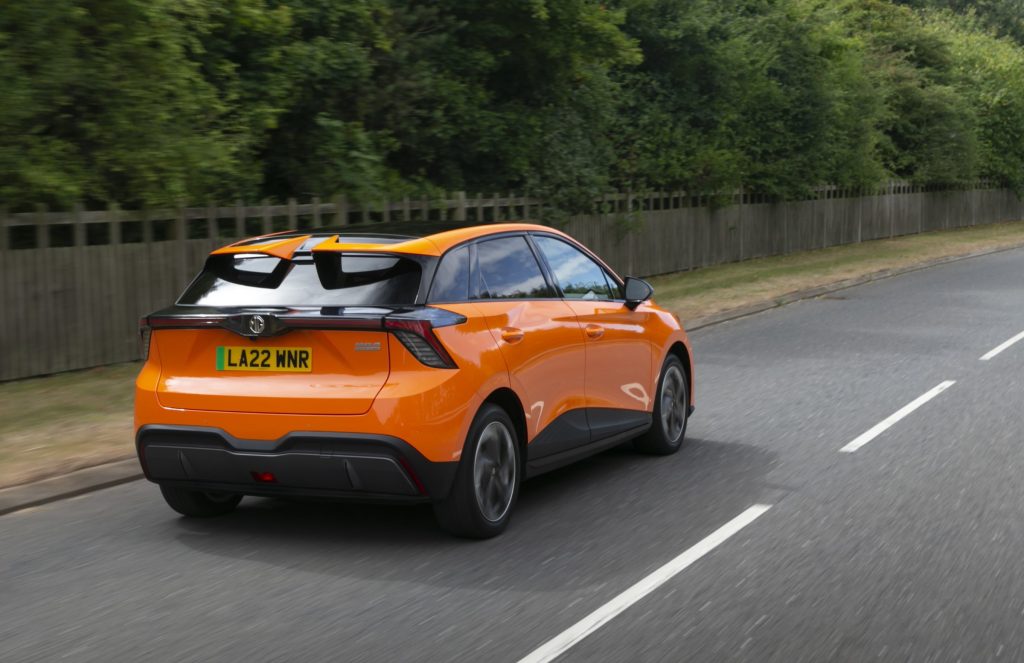
So you’d be forgiven for dismissing the MG4 if you’ve got an MGB in the garage, or even a tidy modern classic like a ZT. It looks a bit funny, like a mishmash created using AI software, and electric power still raises sneers from some corners of the hobby.
All those magazines aren’t lying though. It’s good. Surprisingly so. And not just “does the job” good, but something you might actually enjoy owning and driving.
Some context first. The car’s roughly the size of a Ford Focus, but a couple of inches taller, on account mostly of the batteries sitting under the passenger compartment. So it’s not excessively large or bulky, even if those batteries also contribute to a kerb weight in the 1600kg range, which certainly isn’t light.
The price is less bulky still: £26,995 for the starting point in the range, a few quid less than a basic Focus for a car whose 51kWh battery pack should net you around 220 miles of range in mixed driving, and a lot less than the £39,425 for a 180-mile Volkswagen ID.3.
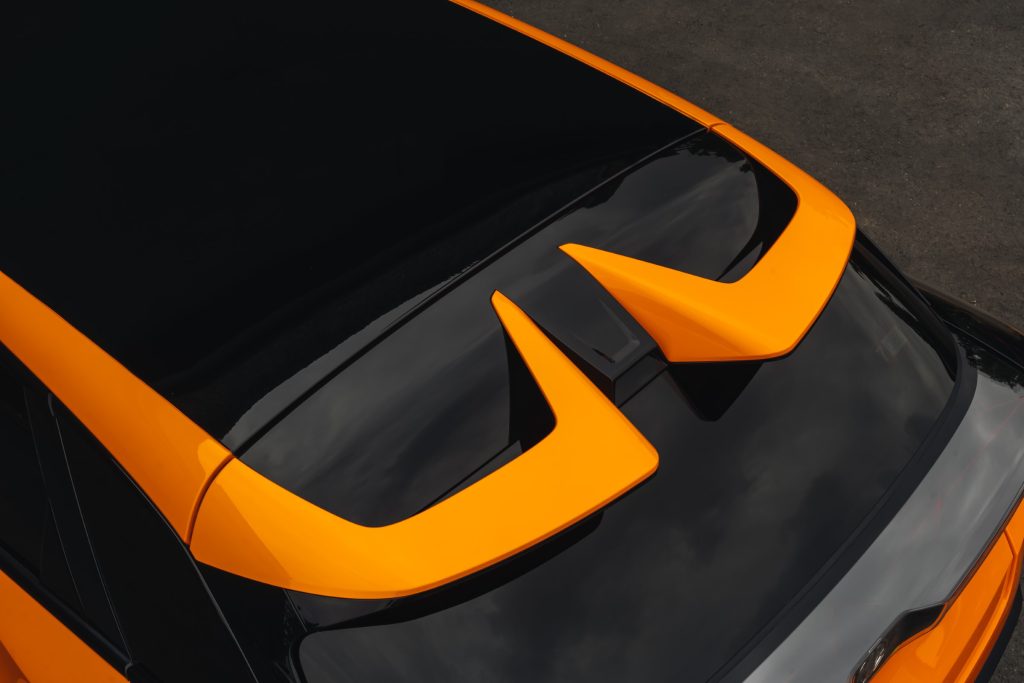
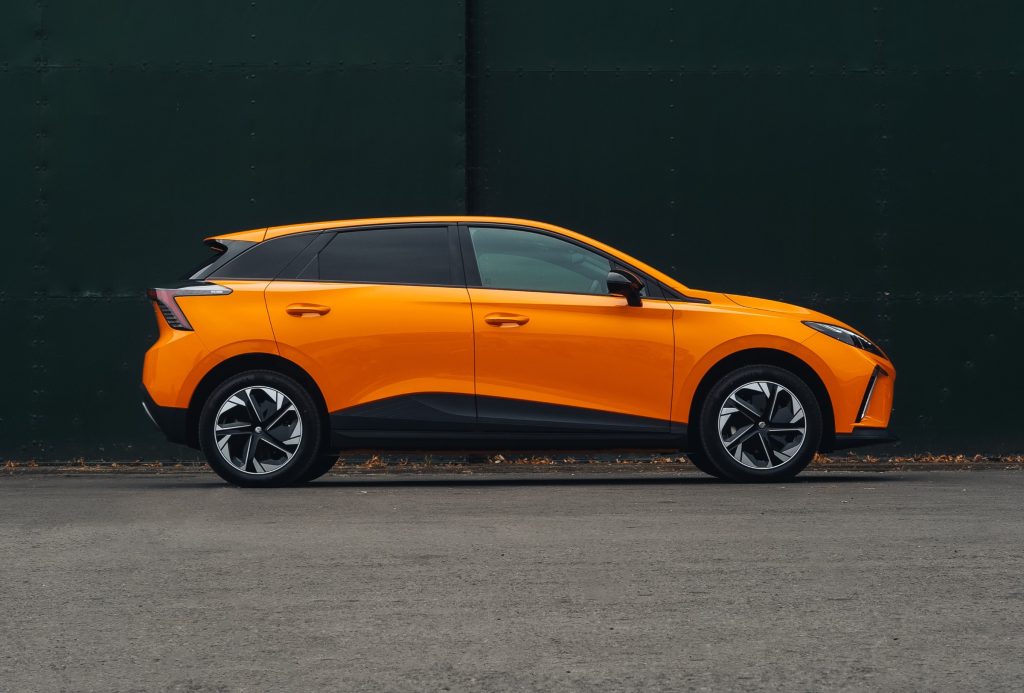
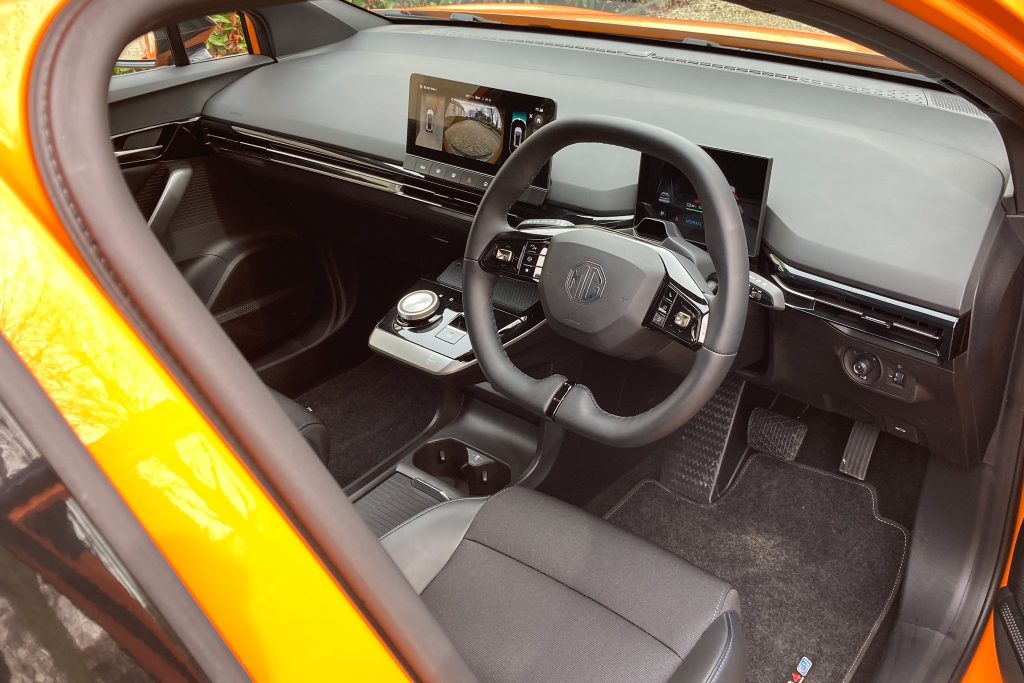
In top-end Trophy spec with the 64kWh “long range” battery, those numbers go up to £32,495 and around 270 miles (or well over 300 in city driving, according to MG), a nine-hour overnight charge, or an hour for a 10-80 per cent rapid charge in public. That’s the car you see here.
It’s packed with equipment, but doesn’t rub your face in it. You can make up your own mind about the exterior styling, but we reckon the interior’s pretty good – a bit dour in uniform black, but the driving position is good, the layout simple and intuitive, it feels spacious but also usefully compact, and the steering wheel shape reminds us of the Allegro’s Quartic wheel. Which is nice.
Like a Tesla, it’s “on” as soon as you get in, and the controls make getting started an easy process. The drive selector and electric handbrake sit on a shelf below the centre screen (along with a phone charging pad), and while our drive was brief, precluding a proper play with the car’s various functions, there are at least physical buttons, rather than haptic touchpads, on the wheel.
The electric motor is rear-mounted and puts out a nice round 200bhp in long-range models. Like a torquey diesel often feels quicker than its figures, the official 7.7 seconds to 60mph possibly understates the instant shove available. The weight holds it back from feeling like a 200bhp hot hatch might, but it’s useful, repeatable performance, and stops well short of being uncomfortable, as some of the quickest EVs can feel. For a Focus-sized family car, it’s plenty.
It’s also intuitive (there’s that word again) to go, stop and steer. It’s very easy to work with the regenerative braking, useful both for topping up the battery and making smooth progress from corner to corner, accelerator response is linear, and the steering feels “right” as soon as you start using it, responsive and consistent. Feedback? Not really, but then few modern cars do.
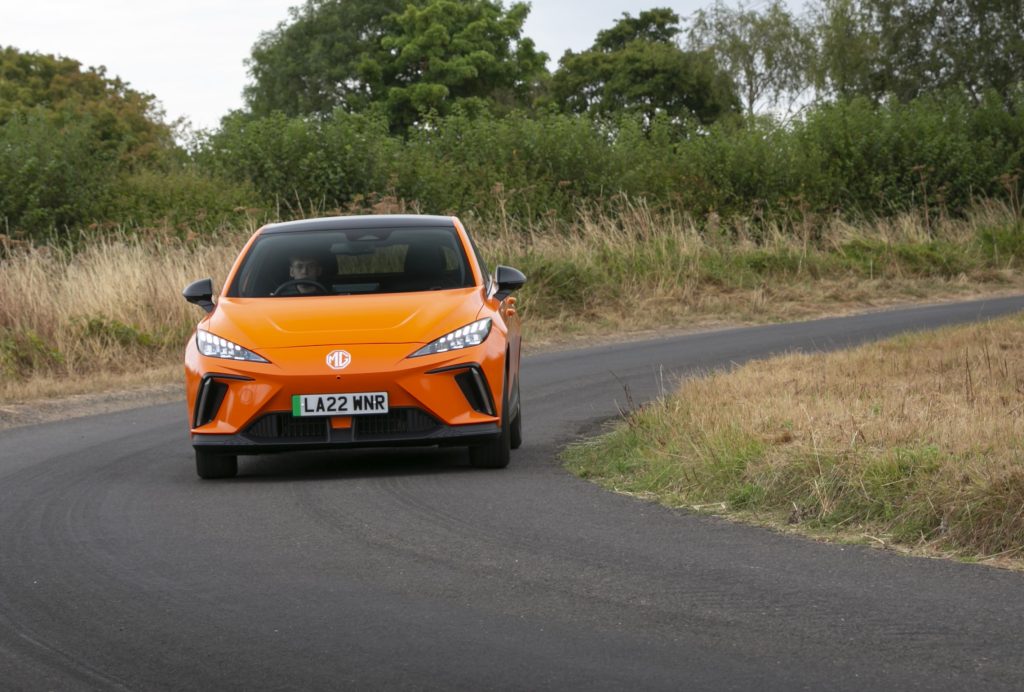
And while it’s a bit tubby for a mainstream family car, it’s relatively light by EV standards and does a good job of feeling agile. It is, we’d go as far as saying, quite good fun on a country road, with the exception of a lane-keep assist system so terrified of white lines that it’ll fight you for control as soon as you get even close to one. This is apparently being corrected with a software patch in the near future.
The only other notable criticism is a low, drum-like resonance on the kind of coarse surfaces that prevail on UK roads. Maybe the asphalt is smoother in China, but it’s enough to want to break out the Dynamat insulation and hunt out bits that might be vibrating. The ride though feels well-judged for a sporty-feeling, 200bhp car – firm and controlled, but far from uncomfortable.
Again, this was only a brief go, but even a short spell behind the wheel and poking around the MG4 was enough to dispel any notion that it’s just a throwaway, gap-filling product only worth a look if you’re trying to squeeze every penny. The range gives it good usability, it feels well-made (resonance aside) and it’s probably the best-driving MG since those ZRs, ZSs and ZTs. And if MG can get this stuff right in a family car, then the upcoming Cyberster electric roadster is starting to look a lot more exciting.
2023 MG4 Trophy Long Range specification
Price: £32,495
Engine: Electric motor
Gearbox: Single-speed, rear-wheel drive
Power: 150kW (201bhp)
Torque: 184lb ft
Weight: 1685kg
Range: 270 miles (WLTP combined), 358 miles (city)
0-60mph: 7.7sec
Top speed: 99mph
Check out the Hagerty Media homepage for daily news, features, interviews and buying guides, or better still, bookmark it.


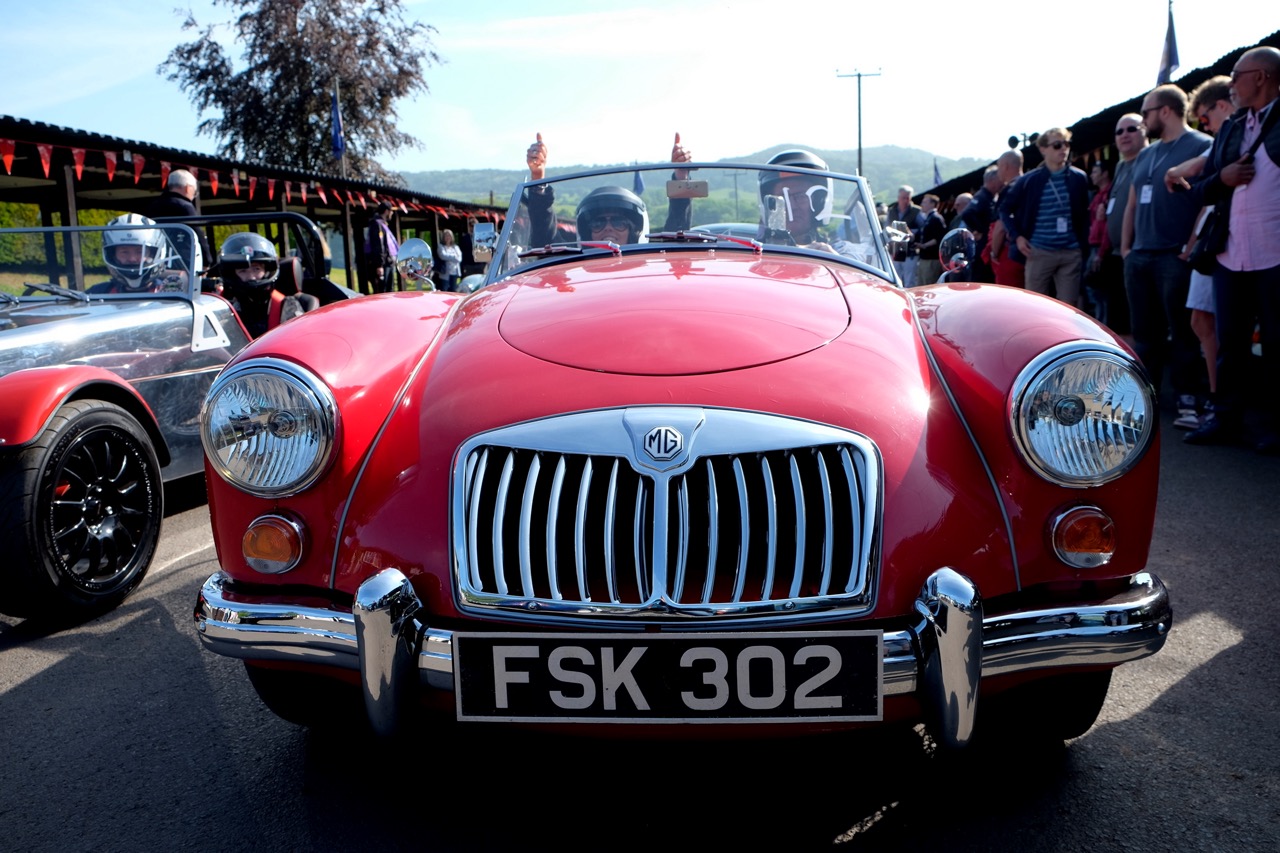
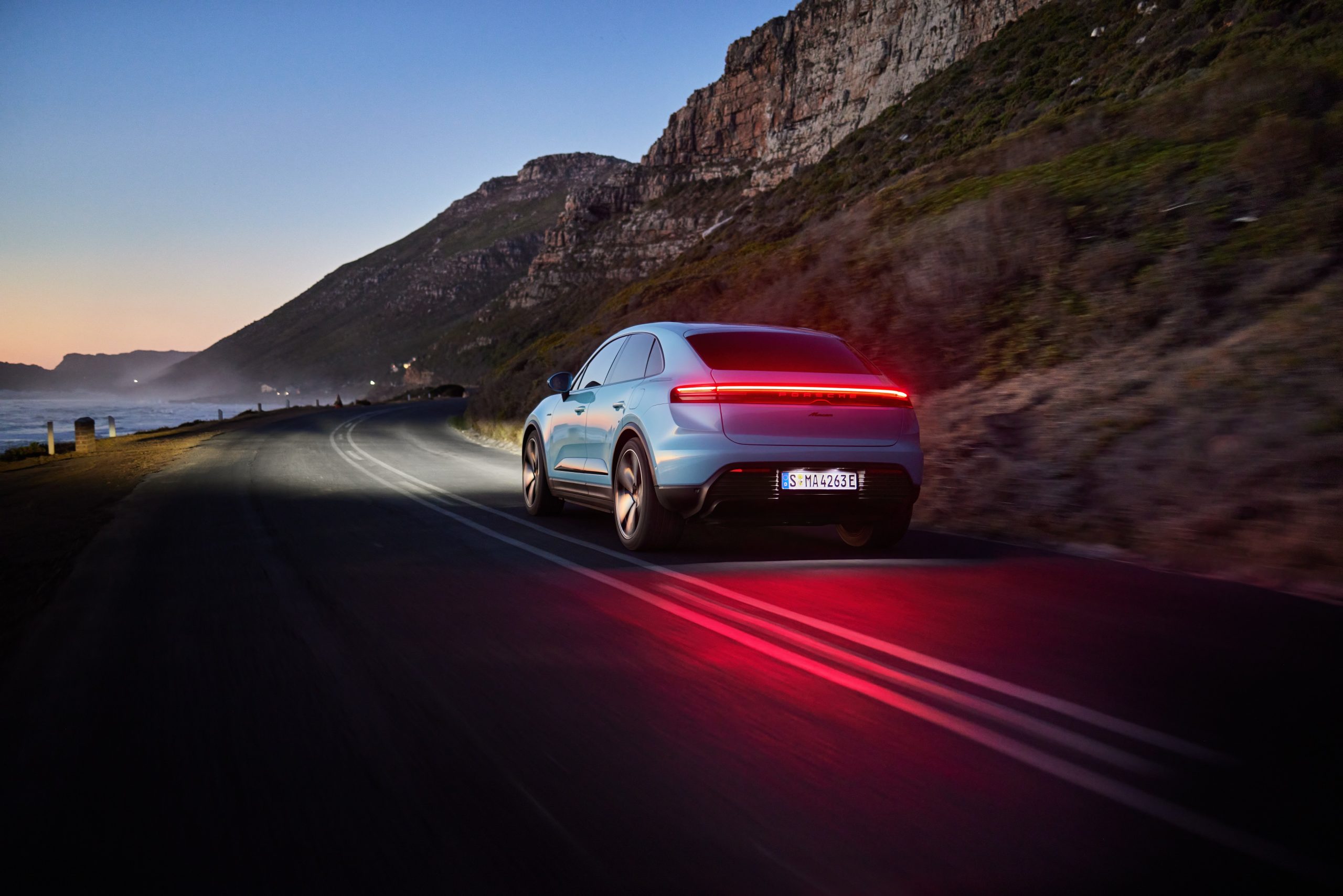







I can’t remember off the top of my head which car it was originally said about, but the Jeremy Clarkson line about the designer falling asleep half-way through the sketch definitely rings true here, too.
Decent front, hideous rear.
I like the rear particularly the front looks like an old punto